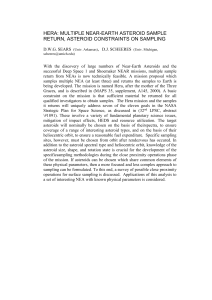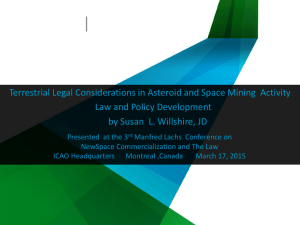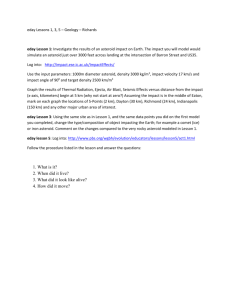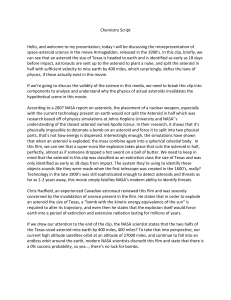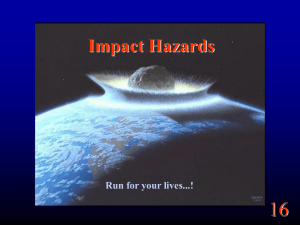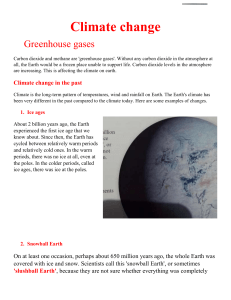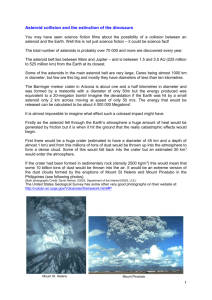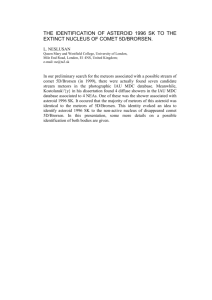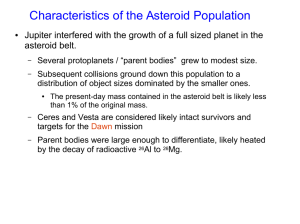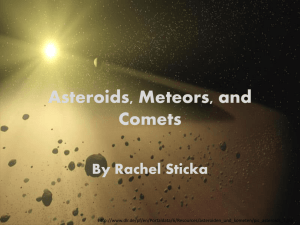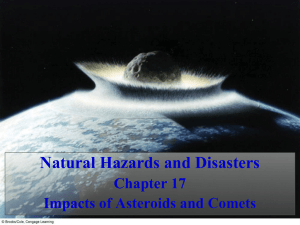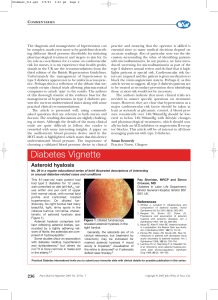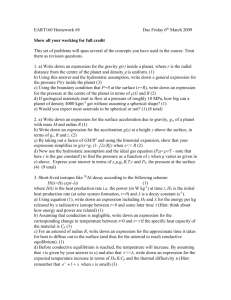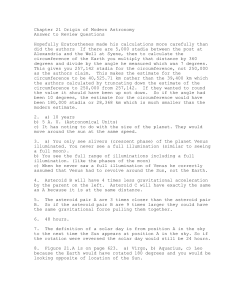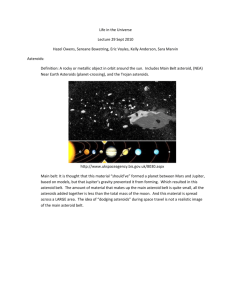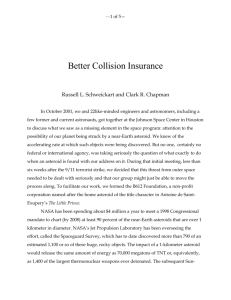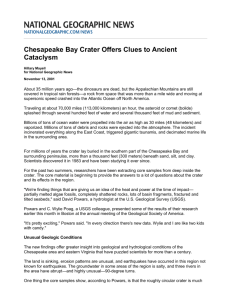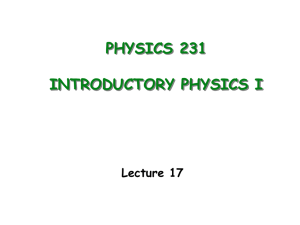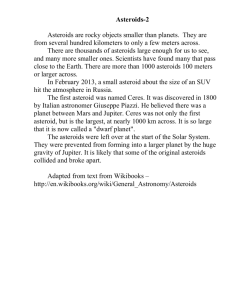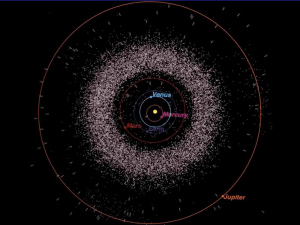Team 10 - IRELAND
advertisement
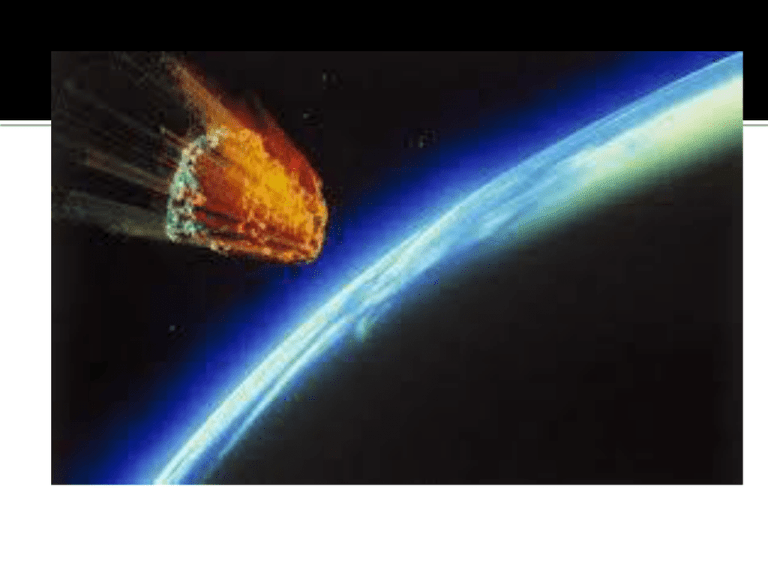
The highs and lows of that experience By Ruth Kennedy, Ian Dooley, Mary Flynn, Marie Ryan & Grace Garvey They form a hypothesis and test to see if their theory is true. Go on fieldtrips to help test their hypothesis. They read up existing literature on a certain scientific topic. They perform tests or experiments. Main skills a scientist requires Co-ordination of tasks Research ability Creativity Logical thinking Interpersonal skills Curiosity Reasoning We looked at a Scientific topic over a series of lessons. The research topic chosen was related to meteorites and the likelihood of them colliding with the earth. The class was split into groups. We used the jigsaw method of learning. Each member researched a different area, brought back what they learned and all this information was displayed on a poster. The chance of an asteroid hitting earth is bigger than previously thought (3 to 10 times more likely). Nasa however indicate that there is less than a 1% chance of asteroid 2013 TV135 hitting earth in 2032. From an article we read on day 1, we learned that 1400 asteroids are known to creep too close to earth for comfort. None of the asteroids mapped pose a threat to Earth within the next 100 years. We then formulated some questions to investigate the following day. What is the force of collision when an asteroid hits? How destructive can they potentially be for human society? Preparation Are asteroids more destructive on land or sea? Day What percentage of asteroids are broken down in the atmosphere? Does speed affect size of crater? We had to devise a suitable experiment for the question we formulated the previous day. We carried out the experiment and created a poster based on our findings. The results show that the bigger the diameter of the marble, the shallower the dent in the flour. As height is increased, the depth of the dent in the flour also increases. From our investigation we concluded that there is a relationship between the diameter and mass of the asteroid in relation to the depth of the crater. We also found that as the drop height of the asteroid is changed, the depth and speed of the asteroid also changed. Each group presented their observations to the class and explained what they did in their experiment and what they had learned. The students gave feedback on their overall experience of the process. As our chosen topic was on meteorites, the University of Limerick organised for an Astrophysicist to speak to our class. He told us about his research work and answered any queries we had. This added to our learning. We have concluded that ‘yes’ an asteroid collision is likely however there are also many ways to deflect them. Such as: Nuclear blast Using mirrors Gravity tractor In the future, if we were to carry out further investigation, we would look at the following: What is an asteroid made up of? The effect the speed of an asteroid has on a collision. Why do some asteroids break up when they hit the earths atmosphere Highs: Everyone got involved. Makes you a more independent learner. You were able to work like a real scientist. Information was retained better. We were able to see everyone else's point of view. Lows: Not everyone in group obtained relevant information. You were unsure if you were doing the experiment right. We would have benefited more if we as students had increased participation during the role model presentation. We would have liked more time to discuss results and accuracy. To make the experience more productive, the following could be considered: More teacher interaction Further discussion on findings and investigative results More time required to get information from the initial research articles. A class to summarise the highlights of the topic and facilitate student note-taking. More time for personal research of topic http://www.education.com/sciencefair/article/space-rocks/ http://www.education.com/sciencefair/article/factors-that-affect-craterformation http://www.astronomy.ie/nasatv.php http://www.bco.ie/ http://nightsky.jpl.nasa.gov/downloadview.cfm?Doc_ID=460
